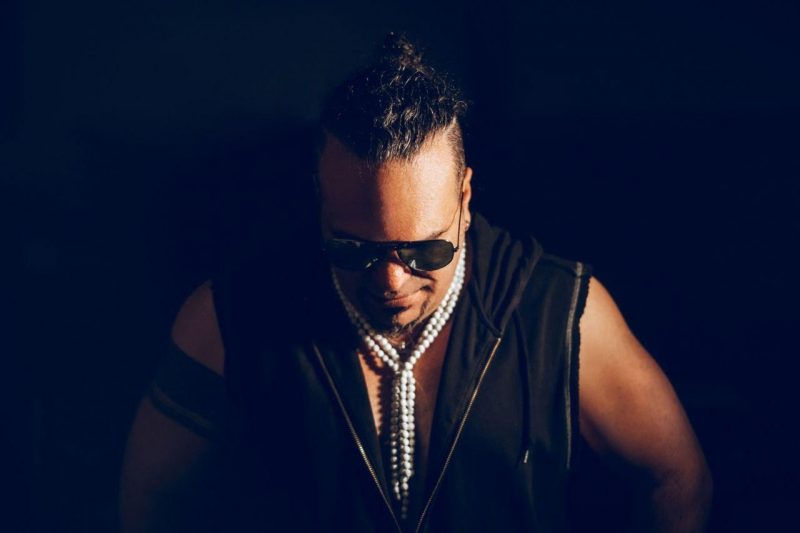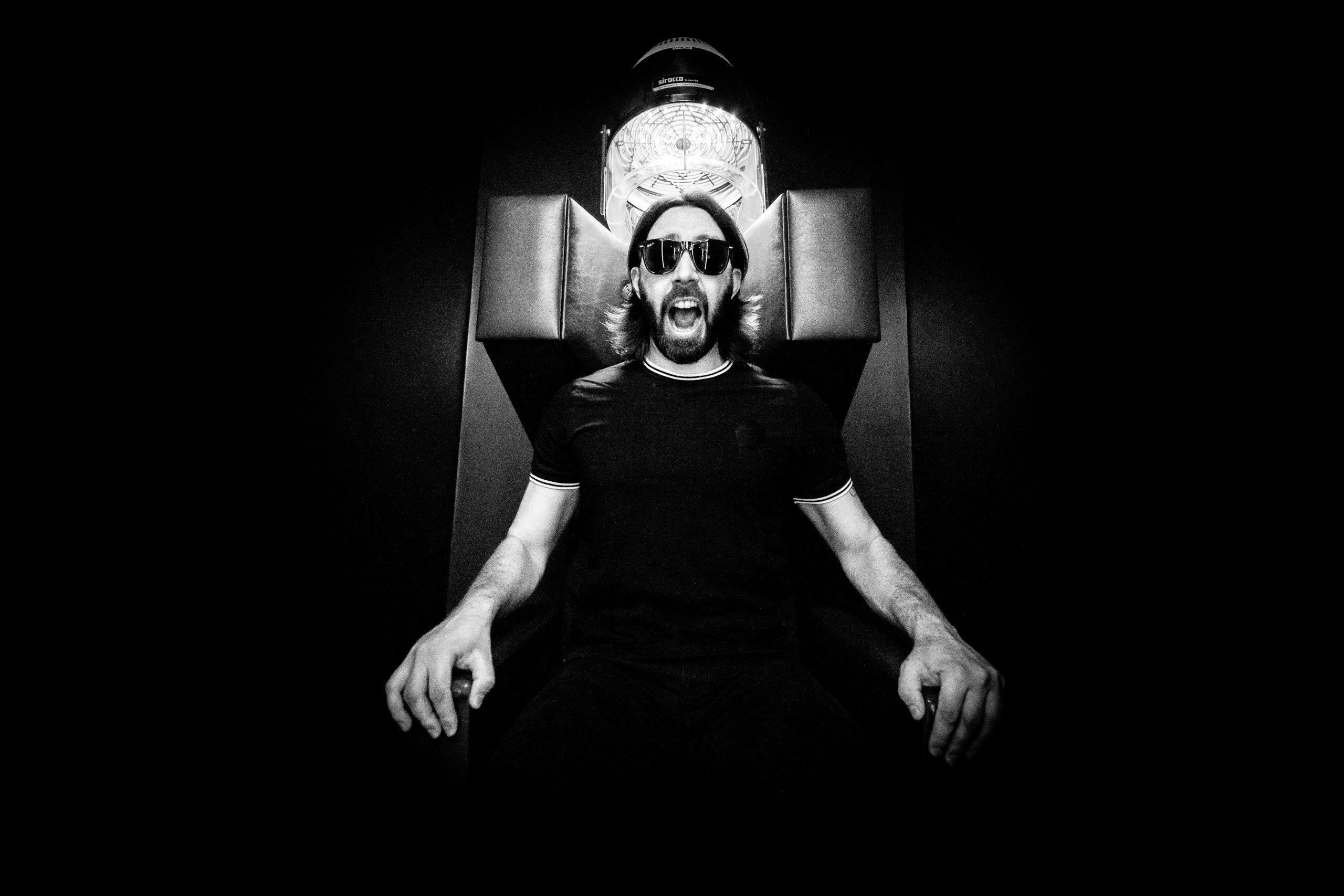In the Spotlight – Feature on visual artist Florence To
With work alongside the likes of FKA Twigs, Primavera Sound, and Boiler Room barely scratching the surface of Florence To’s recent output, it would be an understatement to say that she is an artist in high demand.
In the past few years the Grangemouth-born, London-based artist has provided live visual accompaniment to some of the world’s best electronic music in venues and at festivals across the UK, Europe and the States.
To’s pieces combine installations and live projections to create intricate and dynamic light-scapes, some beautiful examples of which can be viewed below.
We caught up with the Scottish artist to find out more about her incredible past work and what she has coming up in the future. We also had the chance to chat about a groundbreaking new audio-visual creation app Generate, which To believes will encourage further exploration in the AV field.
Hi Florence, how are you and what have you been up to today?
I just returned from my trip from Hong Kong so have been catching up with work, in Berlin now finalising the visual installation I have been working on with 4DSOUND.
Can you tell us a little bit about what you were working on out in Hong Kong?
I was in Hong Kong and China due to a close family member passing away which was the main reason for my time away. However this created some dialogue in moving there to work and teach. Most of my family live in the UK so it was interesting to return to my roots. There seems to be a lot happening there that I wasn’t aware of such as the new development of the cultural arts district in West Kowloon, it was still a construction site while I was over but looks like it will open a lot of new opportunities. I had also visited the Run Run Shaw School of Creative Media and was blown aware by their facilities, this opened up some ideas for the near future.
We understand China in particular is home to a burgeoning arts scene at the moment, was this obvious from your time there? What were you impressed by?
I went to the Zengcheng District of Guangzhou, in the borders of China quite far from the capital. It’s still quite a rural area and only became a county level city this year… so this gives you an idea about the pace of development. I didn’t really see much art during my time there. It was an eye opening experience, I’ve been submersed in this world where I’m so reliant on technology, becoming distant from the influences of the natural environment, it was really interesting to learn about my family history were crafts and having being farmers were part of their everyday lives.
Traditional works are still an influence such as the spiritual mentality, which is part of their cultural identity, and experience everyday. To be submersed in this pattern really makes you think how this affects you in a creative way.
You’ve done some amazing installation and live visuals work in some really cool spaces in the last couple of years, can you tell us a bit about some of these projects?
Most of my projects developed from my interest in how sound works with the physical space. I work closely with the sound designer to create these installations with live performance. In the beginning I began developing modular installations that were designed to fit in multiple spaces also being able to re-position it’s original setting. Restrictions have been a big part in my work process so instead of going against it I use it as part of the design and to utilise the shape of the space. I work a lot on using darkness as well as light, I found it quite interesting working in this way, the darkness controls how strong we see see light. An installation I worked on with Alex Smoke was based on the research on dark adaptation by Biophysics Professor Selig Hecht, I found this approach quite effective changing the perception on how we see light, since then I continued this method working with other artist’s such as Yosi Horikawa and Speedy J.
How does the music influence your installations, and particularly the accompanying live visuals?
When I design the installations it is usually for a particular space, I used the space as part of the design and relation to the rhythm of the frequencies. I originally began creating a library of generative visuals that would work with the different types of music. It wasn’t just about the graphics, the movement in each dimension would be controlled by the sound in a real time response and by what I would trigger/edit whether it would be the position, angle or shape. When I moved on to creating an installation for specific spaces, I would aim to open up the space by creating a modular installation with transparent surfaces. This comes from my study in textiles, how the material responds with light is important to the final outcome. For example when I created an installation for Japanese producer Yosi Horikawa the installation was created based on the textures of his music and the rhythm, I had filmed the different aspects of nature at different times of the day to work with his field recordings, and designed the installation as if they were windows to the outside. I like to learn about the techniques used to make the recordings and see how I can translate these techniques visually.
Who are some of your favourite musicians that you’ve collaborated with on these projects?
I’ve enjoyed working on all the projects I’ve been involved in, everything is a learning process, each project is also different… the performance speaks for itself, this is the part that I enjoy the most when performing the installation live with the artist. However I find the continuity a bit more pleasing, there are always ideas on how to evolve a project and being able to continue working with a collaborator develops a real aesthetic for the next project. For example I still work with Alex Smoke, we have a similar interest in subjects we would like to continue for the next installation. The artists I’m working with at the moment are particularly interesting, I have been working with Ricardo Donoso, Lee Gamble and 4dsound on installations to be shown next year.
If you could collaborate with any musician in the world, who would it be?
When I began working in this field I was quite fortunate to have worked with some interesting producers but now it’s more about having more time to continue researching and developing my skills to be able to create more advanced installations.
And what about artists across other media? Who would be on your wish list to create alongside?
I would like to do more research with spatial sound design and the relation to its physical space, there is never enough time when it comes to research however I would like to take time out to focus on specific elements.I’m quite interested in the works of Bernhard Leitner, he studied the frequencies, volumes, movements, combinations of sounds and their impact on the body, sketching spatial figures and exploring the impact of the body on acoustic perception. He has been creating these installations since the 60’s, his research and sketches are really interesting, it would be great work him.
We understand that you come from a background of working with textiles, how does that background inform or influence your current work?
I began studying textiles specialising in embroidery and before that it was print and knitwear. Then I moved on to specialising in tailoring. It was the skills I learned in tailoring that enabled me to learn how to design these installations. Creating patterns for the body and architecture aren’t so different from each other, you are left with the same design problems when adjusting these patterns. Before I began creating installations I was designing collections using renovated materials, trying to be as resourceful with materials without compromising my aesthetic using clean lines to create functional clothing.
However the longer I do this, the more I am embedded in technology so I feel it is beginning to merge away from my original influence. I’m now more immersed in researching how physical space works with light and how to accentuate the feel of both sound and space together. I still have a strong interest in materials, I’m continuously experimenting with materials to see how it works with light, but I also feel the experience of the audience becomes important for the installation to have that extra element so they are also part of the overall project. It’s a balance of how you evolve in your practice.
What do have coming up in the near future?
I’m currently working on visuals for Unsound and Awakenings Festival in October. Then there are a few installations in the pipeline for next year, I have been developing a site-specific installation with Alex Smoke to show in Scotland and have also started collaborating with Daniel Kessler from Interpol and Joseph Fraioli to work with their new project together [Jafbox Sound].
I have also been working on a new audio-visual show with Boston sound designer Ricardo Donoso and finally a new installation with Pan artist Lee Gamble. Each project is quite different, the concepts are through extensive research and interests in other subjects. I can’t really give out too much information at this stage but next year is going to be quite an exciting year of projects.
We also wanted to get your thoughts on this innovative new app Generate; what were your initial thoughts?
It’s a similar feel to Instagram but with this app you’re encouraged to experiment with the photos and videos in your phone in a more abstract environment. It felt a bit like pushing pixels together, gathering effects on moving image.
Do you think it will benefit artists working across audio-visual disciplines? How?
I think it would work well in a club environment to engage with the audience. It is definitely useful in the VJ department, with the types of filters involved. You will need to know what your intending to use it for, there’s quite a lot of intense effects in the application.
Will it help younger/budding videographers and visual artists learn to experiment with their craft?
I think the younger people who have never tried experimenting with visuals will have a lot of fun with this; I think it will encourage them to further explore this field after playing with the app and maybe how to merge it with other applications.
Who do you think will benefit most from using the app and why?
It will benefit mostly the younger club goers who love to socialise and enjoy their environments. When you would take an image and video on Instagram for example, in this app you will be spending more time cutting and mixing the mediums in your phone, testing out different ways of editing. There is a fun element to it and I can see the potential in the development towards the future stages.
For more information about Florence To and her work, visit florence-to.com.
Check out Generate at generateapp.tumblr.com.
Written by Will Van de Pol





